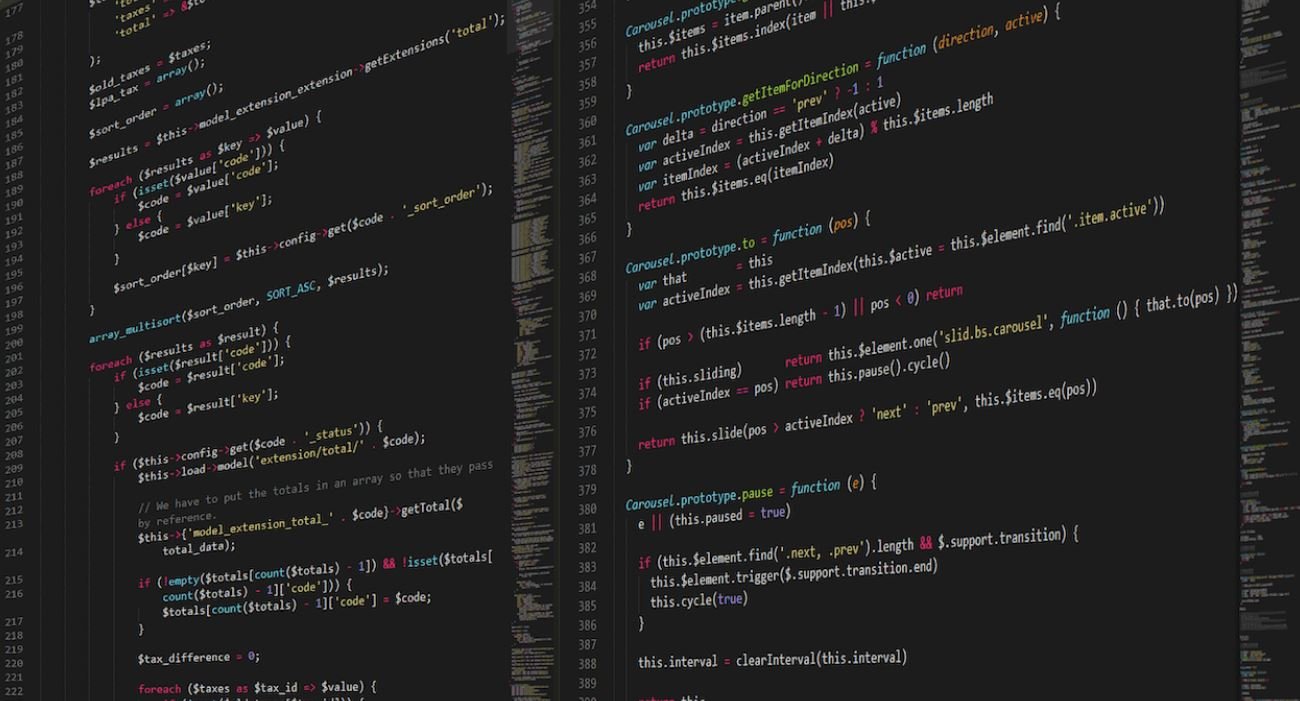Application and Certificate for Payment
Managing construction projects involves various administrative tasks, including applying for payment and certifying completed work. Two common tools used in the construction industry for this purpose are the Application for Payment and the Certificate for Payment. This article will provide an overview of these documents and their essential role in the payment process.
Key Takeaways
- The Application for Payment and Certificate for Payment are crucial elements in the payment process of construction projects.
- The Application for Payment serves as a formal request to the client or project owner for payment based on the work completed.
- The Certificate for Payment certifies the amount due to the contractor or subcontractor based on the application and verifies the correctness of the payment request.
Understanding the Application for Payment
The Application for Payment is a document submitted by the contractor or subcontractor, typically on a monthly basis, to request payment for work completed on a construction project. It outlines the amount due and provides detailed information on all completed work. *This document helps ensure that contractors are compensated fairly for the progress made.*
Role of the Certificate for Payment
The Certificate for Payment is issued by the project architect or engineer, certifying the value of the work completed and approving payment to the contractor or subcontractor. It verifies that the Application for Payment is accurate and that the contractor is entitled to receive payment for the stated amount. *This certificate serves as a formal acknowledgment of completed work and authorizes payment.*
Important Components of the Documents
Both the Application for Payment and the Certificate for Payment include essential components that provide clarity and transparency in the payment process. These components typically include:
- Contractor/Project Information: Details of the contractor, project owner, and project location.
- Work Description: Description of the work completed, including quantities, units, and unit prices.
- Payment Schedule: Breakdown of the payment terms and agreed-upon milestones.
- Change Orders: Any approved changes to the original scope of work.
| Item | Amount (USD) |
|---|---|
| Work Completed in November | 25,000 |
| Change Orders | 3,000 |
| Total Amount Due | 28,000 |
| Milestone | Percentage (%) | Payment Amount (USD) |
|---|---|---|
| Project Initiation | 10% | 10,000 |
| Mid-Point Completion | 40% | 40,000 |
| Project Completion | 50% | 50,000 |
| Description | Amount (USD) |
|---|---|
| Additional Electrical Work | 2,000 |
| Modification of Plumbing System | 1,000 |
Ensuring Fairness and Transparency
The Application for Payment and Certificate for Payment contribute significantly to maintaining fairness and transparency in construction projects. *These documents mitigate payment disputes and provide a systematic approach to ensure accurate compensation for completed work.* Contractors and subcontractors can have confidence in proper payment procedures, while project owners can verify the work completed before making payments.
Streamlining the Payment Process
The use of standardized Application for Payment and Certificate for Payment templates streamlines the payment process in the construction industry. These templates help save time, reduce errors, and ensure consistency across projects. *Efficient payment processes lead to smoother project execution and enhanced productivity.*
In conclusion, the Application for Payment and Certificate for Payment are vital tools in the construction industry, facilitating fair and accurate payment for completed work. By leveraging these documents and adhering to established procedures, construction projects can avoid payment disputes and promote transparency throughout the payment process.

Common Misconceptions
Application for Payment
One common misconception about application for payment is that it guarantees immediate payment upon submission. However, this is not true as it is often a formal request for payment that needs to go through a review and approval process by the payer.
- Application for payment is not equivalent to instant payment.
- Approval is required before payment can be processed.
- The timeline for payment may vary depending on the terms and conditions agreed upon.
Certificate for Payment
Another misconception related to certificate for payment is that it serves as a document guaranteeing full payment for completed work. In reality, a certificate for payment signifies that a certain amount is due, but it does not ensure immediate or full payment.
- A certificate for payment indicates the amount due, not its immediate disbursement.
- Payment may be subject to deductions, contingencies, or change orders.
- Additional documentation or verification may be required for final payment.
Legal Binding
One misconception surrounding application and certificate for payment is that they automatically create legal obligations. However, while these documents are important in the construction industry, they do not alone establish legal obligations between parties.
- Application and certificate for payment are not standalone legally binding contracts.
- Additional agreements, such as a construction contract, are necessary to establish legal obligations.
- Nonetheless, these documents provide valuable information and serve as formal records for payment purposes.
Payment Amount Accuracy
Some people might assume that the payment amount stated in the application or certificate for payment is always accurate and representative of the actual work completed. However, discrepancies can arise, and it’s important to ensure that the stated payment amount aligns with the work performed.
- Double-check the calculations in the application or certificate for payment to ensure accuracy.
- Inaccurate payment amounts may require revisions or adjustments.
- Miscommunications or misunderstandings may occur, leading to payment discrepancies.
Payment Timelines
Lastly, there can be a misconception that payments should always be made promptly after the submission of an application or certificate for payment. However, payment timelines can vary depending on the agreed terms and conditions, and delays are not uncommon.
- Payment timelines should be clearly defined in the payment terms agreed upon by both parties.
- Delays in payment processing can be attributed to various factors, such as administrative procedures or unforeseen circumstances.
- It is essential to have open communication and proper documentation to address any payment delays or issues.

Application and Certificate for Payment
When it comes to documenting and requesting payment for completed work in various industries, the application and certificate for payment play a vital role. These documents outline the work performed, its corresponding value, and ensure fair compensation for contractors and subcontractors. Here we present 10 tables showcasing different elements and aspects related to the application and certificate for payment.
Application and Certificate for Payment
An overview of the different types of payment applications and certificates used in the construction industry, specifying their purpose and usage.
| Type | Purpose | Usage |
|---|---|---|
| Progress Payment Application | To request payment for work completed up to a specific point in time. | Submitted monthly or upon reaching a milestone. |
| Final Payment Application | To request the final payment after completing all the work. | Submitted at the end of the project. |
| Change Order Payment Application | To request payment for approved changes to the original contract. | Submitted when changes are implemented. |
| Retention Payment Application | To request payment for the retention amount withheld throughout the project. | Submitted upon meeting specified criteria. |
Application for Payment Breakdown
A breakdown of the various components and calculations involved in an application for payment, ensuring clarity and transparency in the payment request process.
| Item | Description | Unit Price | Quantity | Amount |
|---|---|---|---|---|
| Material | Cost of materials used for the project. | $50 | 100 | $5,000 |
| Labor | Cost of labor involved in completing the work. | $25 | 200 | $5,000 |
| Equipment | Cost of equipment rental or usage. | $100 | 50 | $5,000 |
| Subcontractor | Cost of subcontracted work. | $75 | 100 | $7,500 |
Percentage of Completion
A comparison of the percentage of completion method and the completed contract method used to determine the appropriate recognition of revenue and billing amounts.
| Method | Advantages | Disadvantages |
|---|---|---|
| Percentage of Completion | Recognizes revenue and billing based on the progress of the project. | Requires accurate estimation of project completion and associated costs. |
| Completed Contract | No revenue recognized until the project is fully completed. | Does not accurately reflect progress and cash flow during the project. |
Interest Calculations
An example illustrating the calculation of interest on late payments based on prevailing rates and the number of days outstanding.
| Payment Amount | Days Outstanding | Interest Rate | Interest Calculation |
|---|---|---|---|
| $10,000 | 30 | 0.02 | $10,000 * 30 * 0.02 = $6,000 |
Certification Process
The steps involved in the certification process, ensuring that all necessary documentation is in order before payment can be made.
| Step | Description |
|---|---|
| Review Documentation | Review all supporting documentation and verify its accuracy. |
| Site Inspection | Conduct a physical inspection of the project site to ensure compliance. |
| Approval | Obtain necessary approvals from supervisory personnel. |
| Documentation Submission | Submit all required documents to the appropriate department. |
Payment Schedule
An example payment schedule outlining the anticipated payment amounts at different project milestones.
| Milestone | Percentage Complete | Payment Amount |
|---|---|---|
| Project Start | 0% | $0 |
| First Phase Completion | 25% | $25,000 |
| Second Phase Completion | 50% | $50,000 |
| Final Completion | 100% | $100,000 |
Retention Amount
A breakdown of the retention amount withheld from each payment as a guarantee for the satisfactory completion of the project.
| Payment Amount | Retention Percentage | Retention Amount |
|---|---|---|
| $10,000 | 5% | $500 |
| $20,000 | 5% | $1,000 |
| $30,000 | 5% | $1,500 |
Documentation Requirements
The necessary documentation and supporting materials needed to accompany the application and certificate for payment.
| Document | Description |
|---|---|
| Work Completed Report | A detailed report listing the work completed during the period. |
| Change Order Requests | Any approved changes to the original contract with corresponding documentation. |
| Subcontractor Invoices | Invoices from subcontractors working on the project. |
| Labor Reports | Reports detailing the hours worked and wages paid to the workforce. |
Approval Process
The process of reviewing and approving the application for payment, ensuring accuracy and compliance before the payment is processed.
| Step | Description |
|---|---|
| Internal Review | Review the application internally for accuracy and completeness. |
| Management Approval | Obtain approval from management or authorized personnel. |
| External Review | Submit the application to external agencies for review and approval. |
| Release of Payment | Process the payment once all approvals are obtained. |
These tables provide a glimpse into the diverse elements and processes associated with the application and certification of payment. From different types of payment applications to interest calculations and approval processes, ensuring accurate and fair payment practices is crucial in various industries. By following these guidelines and utilizing clear documentation, contractors and subcontractors can maintain transparency and ensure prompt payment for their hard work and services.
Frequently Asked Questions
What is an Application for Payment?
An Application for Payment is a document submitted by a contractor to request payment for completed work. It typically includes details such as the project’s progress, the value of work completed, and any outstanding or pending payments.
What is a Certificate for Payment?
A Certificate for Payment is a document issued by the architect, engineer, or project manager certifying the amount of money due to the contractor based on the completed work outlined in the Application for Payment.
Who prepares the Application for Payment?
The Application for Payment is usually prepared by the contractor or their representative, such as an estimator or project manager.
Who issues the Certificate for Payment?
The Certificate for Payment is typically issued by the architect, engineer, or project manager responsible for overseeing the construction project.
How often can the Application for Payment be submitted?
The frequency of submitting the Application for Payment largely depends on the terms outlined in the contract. It is often done on a monthly basis, but it may vary depending on the project and agreement between the parties.
What should an Application for Payment include?
An Application for Payment should include details such as the project’s name and location, the amount requested, a breakdown of completed work, any change orders, and any outstanding or pending items that may affect the payment.
What factors can impact the approval of an Application for Payment?
Factors that can impact the approval of an Application for Payment may include incomplete or unsatisfactory work, discrepancies between the contract and the work performed, outstanding change orders, disputes, or failure to meet contract milestones.
How is the amount in the Certificate for Payment determined?
The amount in the Certificate for Payment is determined by the architect, engineer, or project manager based on their assessment of the completed work, compliance with the contract terms, and any adjustments for change orders or outstanding items.
What happens after the Certificate for Payment is issued?
After the Certificate for Payment is issued, the contractor can submit it to the owner or responsible party for final approval and processing of the payment. Once approved, the payment should be made according to the agreed-upon terms.
What can I do if there is a dispute regarding the Application or Certificate for Payment?
If there is a dispute regarding the Application or Certificate for Payment, it is advisable to refer to the terms and conditions outlined in the contract. In some cases, mediation, arbitration, or legal action may be necessary to resolve the dispute.





